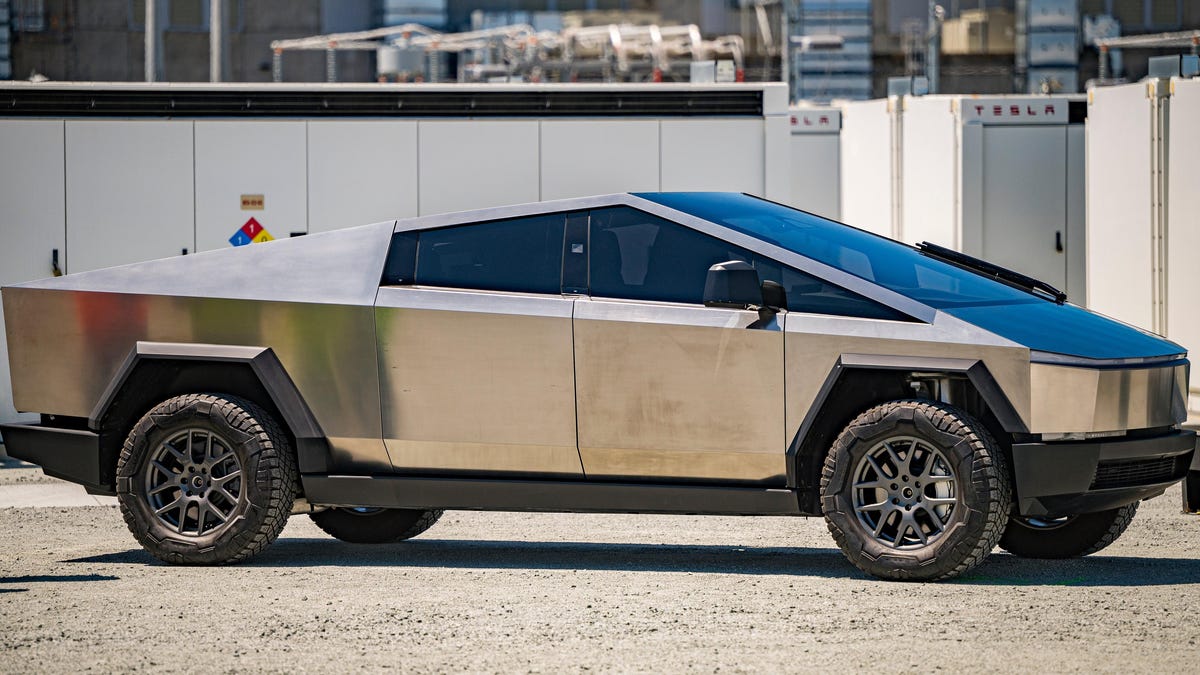Tesla’s Cybertruck has introduced plenty of manufacturing challenges, from its massive panes of glass to its stainless steel body panels, but there’s another thing holding big-time production back: the “4680″ battery set to power the pickups, Reuters reports based on conversations with nine different Tesla workers.
For the 4680, Tesla is instituting a new process that relies on dry-coating electrodes. Theoretically, that method should be faster and cheaper than standard battery production, but it appears that no one factored in the concerns that would arise as soon as production scaled up.
Here’s the difference between standard battery production and 4680 production, from Clean Technica:
A traditional lithium ion battery uses a wet paste to coat the anode and the cathode. In the manufacturing process, a considerable amount of room in the factory is devoted to drying those coatings before the whole thing gets rolled up and stuffed inside the outer metal shell to become what we think of as a battery cell.
Many readers may recall that Tesla bought a company called Maxwell Technologies five years ago, primarily for its dry electrode process. Dry coating means less energy needed for drying, less floor space in the factory for the drying process, and lower production costs.
According to the insiders that Reuters spoke with, Tesla has found success dry-coating the anode in the 4680 cells, but the cathode was proving problematic. That’s bad news, because the cathode is the most expensive component of the battery.
Here’s a little more context from Reuters:
Dry-coating anodes and cathodes is proven in the laboratory, as well as for smaller energy storage devices such as super capacitors, and even some small batteries, according to Yuan Gao, a battery technology consultant.
“But no one has done it so far for large EV batteries at a mass scale and at a high enough speed. Tesla is the first one to try to commercialize this,” said Gao, who has worked in the industry for three decades.
“The challenge is that not only does Tesla have to scale it up and speed up the process, it also must develop its own equipment and tools. It’s daunting to say the least,” he said.
Developing a full production line based on lab-proven techniques ain’t easy, and Tesla is struggling to make its big dreams a reality.
Three of Reuters’ sources claimed that each 4680 Cybertruck battery requires 1,360 individual cells. To supply Tesla’s projected output of 250,000 Cybertrucks a year, the company would also have to make 340 million cells per year — about one million per day.
Right now, it takes Tesla roughly 16 weeks to make 10 million cells. Reuters did the math; at that scale, Tesla will only be able to make around 24,000 Cybertrucks per year. In other words, Tesla would be making one-tenth of the number of vehicles it predicted.
Tesla is also exploring the usage of this dry-coating technique for future vehicles, most notably its alleged sub-$25,000 EV.
Insiders still have hope that Tesla’s battery production will pick up speed once it fine-tunes the dry-coating strategy, but it’s not exactly ideal to still be figuring out how to build the most critical element of your vehicle when those vehicles are long overdue for public delivery.

